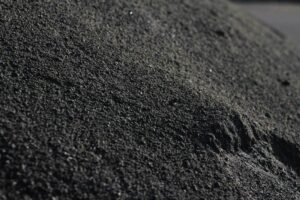Rice Husk Ash Manufacturing Plant Setup 2025: Detailed Project Report, Cost Analysis and Raw Materials
Setting up rice husk ash plant cost is a key consideration for entrepreneurs, investors, and MSMEs aiming to enter the eco-friendly industrial materials sector. Rice husk ash (RHA) is a by-product of rice milling, widely valued for its silica content and diverse industrial applications, including cement, steel, rubber, and refractory manufacturing. Establishing a rice husk ash production plant requires careful planning around raw materials, machinery selection, operational workflow, and cost components to ensure efficiency and long-term viability.
Understanding Rice Husk Ash and Its Market Potential
Rice husk ash is obtained after the controlled combustion of rice husk, which contains high amounts of silica. Its lightweight, pozzolanic, and insulating properties make it valuable in construction materials, ceramics, filtration systems, and even as a soil conditioner. With growing global emphasis on sustainable materials and waste utilization, RHA production presents a profitable and environmentally responsible business opportunity.
The market is expanding due to increased demand for eco-friendly industrial additives, stricter environmental regulations promoting agricultural waste utilization, and rising infrastructure development in emerging economies.
Request for a Sample Report: https://www.imarcgroup.com/rice-husk-ash-manufacturing-plant-project-report/requestsample
Raw Material Requirements for Rice Husk Ash Plant
Raw material sourcing is central to the plant's operations. The primary input is rice husk, obtained as a by-product from rice mills. The quality of rice husk and the combustion process directly affect the purity and characteristics of the ash.
Key raw materials and requirements include:
- Rice Husk – The main feedstock, with consistent supply from nearby rice mills ensuring steady production.
- Fuel (if needed) – While rice husk can serve as its own fuel in some furnace designs, auxiliary fuels may be used for controlled burning.
- Water – For certain processing steps, washing, or dust suppression.
- Packaging Materials – Bags or bulk storage systems for transporting RHA to customers.
Machinery Requirements for Rice Husk Ash Plant
The machinery requirements depend on the production capacity, desired ash quality, and specific applications. Modern RHA plants integrate energy-efficient systems to maximize output while minimizing emissions.
Essential machinery includes:
- Rice Husk Storage and Handling Units – Silos or hoppers to store husk before processing.
- Furnace/Incinerator – Designed for controlled burning to achieve desired ash characteristics.
- Dust Collection System – Cyclone separators, bag filters, or electrostatic precipitators to control emissions.
- Cooling and Screening Units – For temperature reduction and particle size classification.
- Packaging and Bagging Machines – For efficient storage and distribution.
- Material Conveying Systems – Belt conveyors, screw conveyors, or pneumatic transport systems.
Ask An Analyst: https://www.imarcgroup.com/request?type=report&id=14908&flag=C
Step-by-Step Process for Rice Husk Ash Production
Setting up the plant involves a series of carefully coordinated steps to ensure consistent and high-quality production:
- Raw Material Collection – Rice husk is transported from mills to the plant.
- Storage and Feeding – Husk is stored in silos or hoppers and fed into the furnace.
- Controlled Combustion – Furnace operates at optimized temperatures to produce ash with desired chemical properties.
- Cooling and Screening – Ash is cooled and sieved to remove oversized particles.
- Dust Management – Filtration systems capture fine particulates and ensure compliance with emission standards.
- Packaging – Ash is packed in bags or bulk containers for distribution.
The setup cost analysis involves understanding all components that contribute to the initial and operational expenses. While specific figures depend on location, scale, and technology, the cost breakdown generally includes:
- Land and Site Development – Costs for purchasing or leasing land and preparing it for plant construction.
- Civil Construction – Building foundations, processing halls, storage facilities, and administrative offices.
- Machinery and Equipment – Procurement, installation, and testing of the required machinery.
- Utilities Installation – Power supply, water connections, and waste management systems.
- Labor and Training – Hiring skilled and unskilled workers, along with training for operational efficiency.
- Compliance and Licensing – Environmental clearances, pollution control certifications, and other statutory approvals.
- Working Capital – Initial raw material purchase, packaging supplies, and operational expenses until revenue generation begins.
Several market trends and economic factors influence the feasibility and profitability of setting up a rice husk ash plant:
- Growing Construction Demand – Increased use of RHA in cement and concrete enhances strength and durability.
- Environmental Regulations – Governments are encouraging waste-to-wealth initiatives, creating favorable policies.
- Industrial Diversification – RHA is increasingly used in steel production, refractory bricks, and silica-based products.
- Technological Advancements – Modern furnaces and emission control systems improve efficiency and product quality.
- Export Potential – High-grade RHA with high silica content finds demand in international markets.
While the business has significant opportunities, certain challenges need to be addressed:
- Raw Material Availability – Seasonal rice production can impact husk supply.
- Quality Consistency – Achieving uniform ash properties requires precise control over combustion.
- Environmental Compliance – Meeting stringent emission standards demands advanced dust control systems.
- Market Competition – New entrants must differentiate through product quality and service.
Conclusion
Setting up rice husk ash plant cost depends on multiple factors, including raw material sourcing, machinery selection, and operational planning. With its growing industrial applications and environmental benefits, rice husk ash production offers a promising avenue for entrepreneurs and investors. By focusing on efficient processes, compliance with environmental norms, and market-driven production, businesses can establish a sustainable and profitable operation in this expanding sector.
